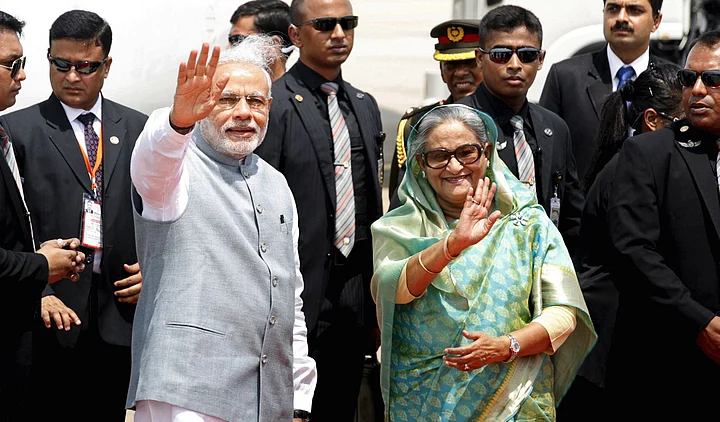New Delhi has given high priority to improving ties with Dhaka and there is a clear consensus among the two neighbours on improving bilateral ties. The ruling BJP has in that sense not really deviated from the UPA government’s approach towards Bangladesh. This is evident not just from the recently-signed Land Boundary Agreement but also in the rise in bilateral trade, which is currently pegged at around $7 billion (in 2014-2015).
Efforts are also being made to enhance connectivity between the northeast and Bangladesh, the stumbling block being West Bengal Chief Minister Mamata Banerjee. Mamata might not have budged on the Teesta water sharing agreement so far, because the political compulsions are more than obvious, especially when assembly elections to West Bengal are due in 2016. Banerjee had accompanied Prime Minister Narendra Modi on his visit to Bangladesh in early June
While India and Bangladesh are working towards enhancing bilateral ties, another key player in Asia, Japan, is also inching closer to Bangladesh. Japan, which seemed to have lost out to other investors, is beginning to hold its own. While Bangladesh PM Sheikh Hasina visited Tokyo in May 2014, her counterpart Shinzo Abe was the first Japanese premier to visit Bangladesh in September 2014. During Hasina’s visit, Japan announced a $6-billion aid for Bangladesh, while Dhaka also gave up its bid for membership on the United Nations Security Council, leaving space for Japan.
Will the triad work?
A large section of Bangladesh’s population is not comfortable with China’s increasing footprint in their country. One of the recent indicators that Bangladesh is averse to putting everything in the Chinese basket is the fact that Japan may ultimately be handed the deep sea port project at Matarbari. Work on the Matarbari port is likely to begin in early 2016 while China is in talks with Bangladesh to build a port at Sonadia island which is 25 kms from the proposed port at Matarbari. Connectivity with Bangladesh is crucial since it is the second largest exporter of readymade garments in the world.
India may not be in a position to counter China financially in both South and South East Asia but it could focus on improving ties with Japan. Enhanced bilateral cooperation in the economic and strategic spheres between India and Japan can be a strong rebuttal to the Chinese ‘One Belt One Road’ project. On their part, the Japanese are interested in investing in an economic zone from the northeast to Myanmar. Japanese investment in India’s northeastern states can complement initiatives towards enhancing connectivity with Bangladesh. Similar industrial corridors and economic zones can be set up in states sharing borders with Bangladesh –
Tripura, Meghalaya, Assam, Mizoram and West Bengal.
India and Japan need to move beyond platitudes and lip service. There are enough opportunities for both countries to partner in both South-East Asia and South Asia. It remains to be seen whether the Indian leadership is willing to take that ‘extra step’ to develop an unequivocally strong partnership with Japan to counter Chinese influence in South Asia. This is all the more important in the wake of the recent stand taken by China at the UN on the issue of 26/11 mastermind Zakiur Rehman Lakhvi’s release. Taking Bangladesh and Japan on board the anti-terrorism plank will be in India’s self-interest.
(The writer is a Senior Research Associate, The Jindal School of International Affairs.)
(At The Quint, we question everything. Play an active role in shaping our journalism by becoming a member today.)
